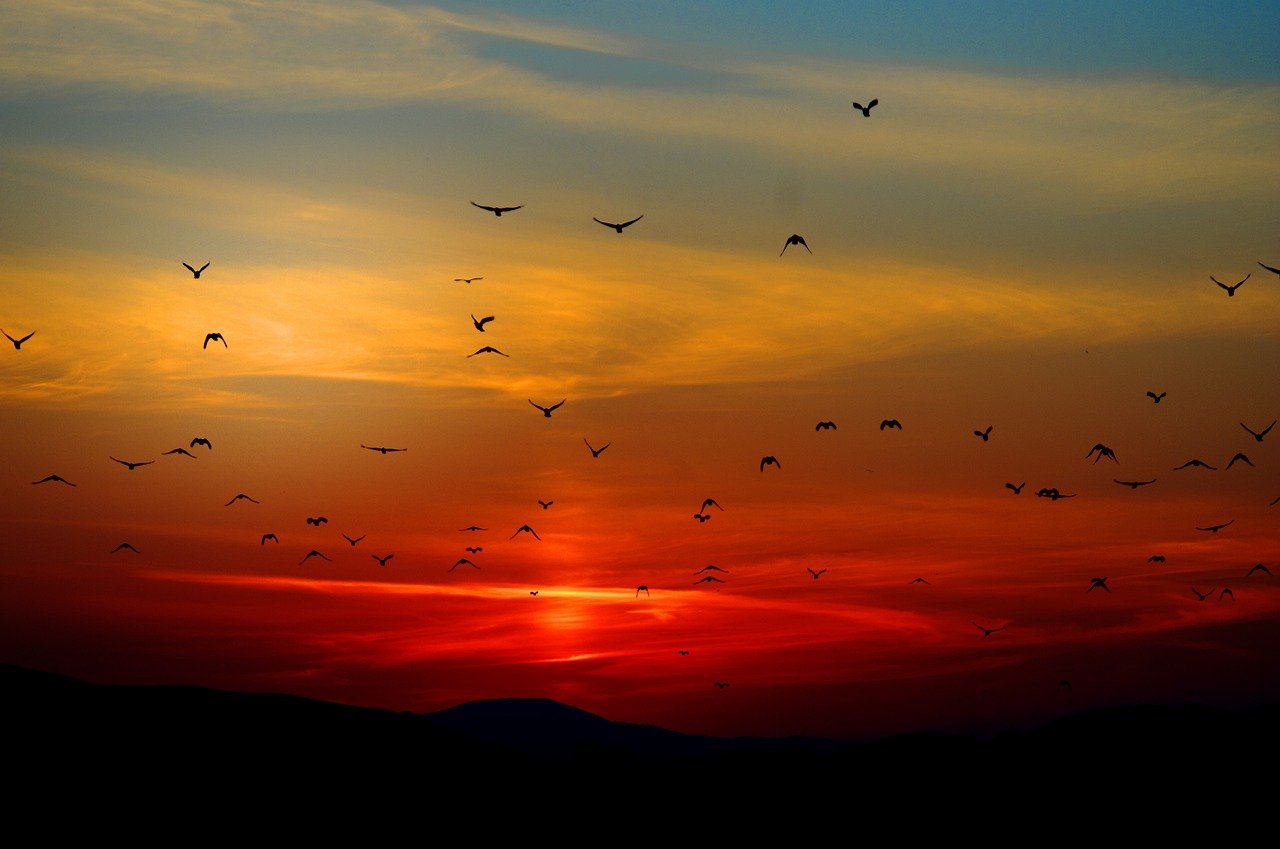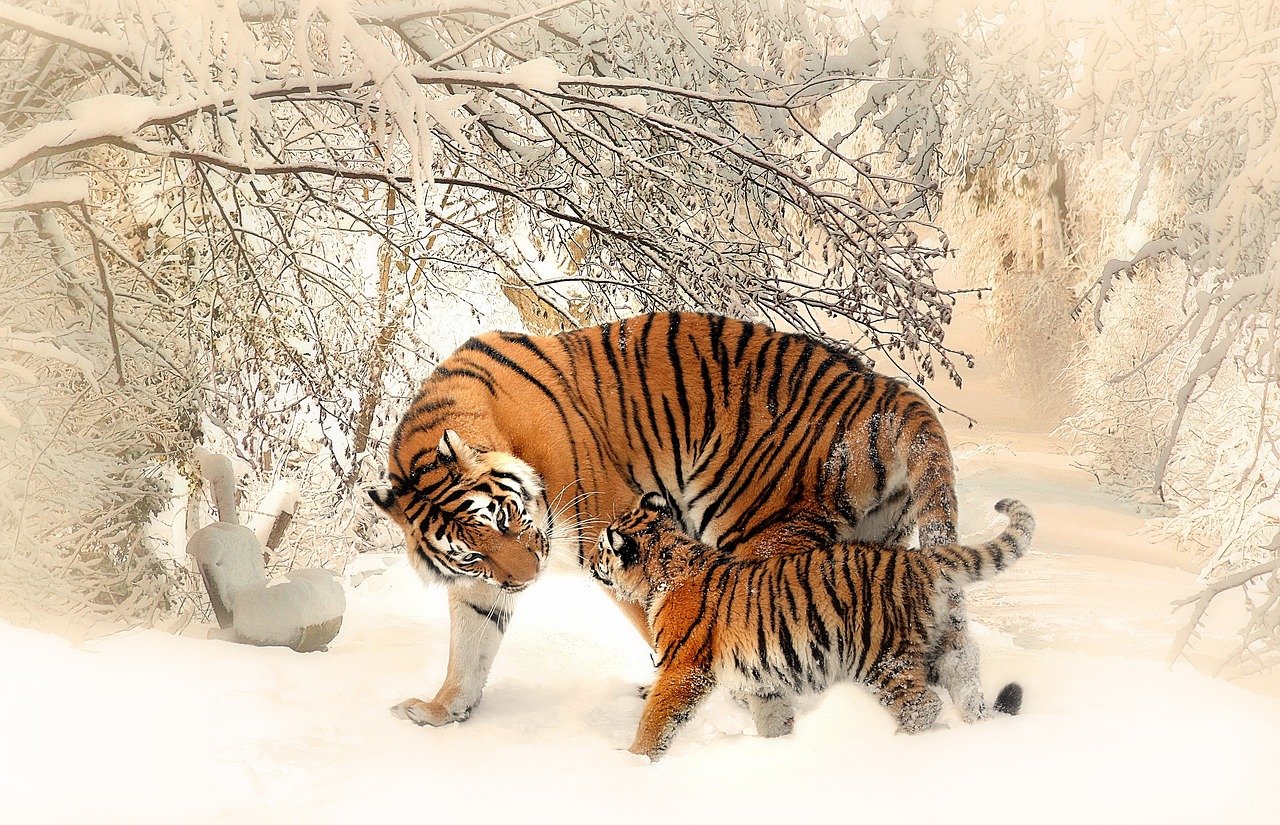Exploring Wildlife Sanctuaries: The Ultimate Adventure for Nature Enthusiasts
Imagine embarking on a mesmerizing adventure filled with the wonders of nature – a journey through wildlife sanctuaries and refuges that will captivate your senses and leave you in awe. From the towering trees of dense forests to the glistening waters of serene lakes, these havens offer a glimpse into an enchanting world teeming with exotic creatures and breathtaking landscapes. So pack your bags, don your explorer’s hat, and get ready to immerse yourself in the beauty of nature as you explore these magical sanctuaries and refuges.

What are Wildlife Sanctuaries and Refuges?
Definition
Wildlife sanctuaries and refuges are protected areas of land and water that are specifically designated for the conservation and protection of wildlife and their habitats. These areas are set aside to ensure the survival and well-being of various species of animals and plants, making them essential for maintaining biodiversity and preserving natural ecosystems.
Purpose
The primary purpose of wildlife sanctuaries and refuges is to provide a safe and secure environment for wildlife to flourish. These areas are meant to serve as havens for animals and plants, protecting them from human activities such as hunting, habitat destruction, and pollution. By establishing and maintaining these protected areas, we can help ensure the long-term survival of countless species.
Types
There are various types of wildlife sanctuaries and refuges, each with its own unique characteristics and purposes. National parks, such as Serengeti National Park in Tanzania and Yellowstone National Park in the United States, are among the most well-known. Others include wildlife reserves, game reserves, and marine reserves. These protected areas can be found in different parts of the world, covering a wide range of ecosystems and providing diverse habitats for various species.
Importance of Wildlife Sanctuaries and Refuges
Conservation of Biodiversity
One of the key reasons why wildlife sanctuaries and refuges are important is their role in conserving biodiversity. These protected areas act as crucial biodiversity hotspots, supporting a wide array of plant and animal species. By preserving natural habitats and providing a safe haven for various organisms, sanctuaries and refuges contribute to the overall health and resilience of ecosystems.
Protecting Endangered Species
Wildlife sanctuaries and refuges play a vital role in protecting endangered species from extinction. Many of these areas are specifically designated for the conservation of rare and threatened species, providing them with a secure habitat and reducing the pressures they face in the wild. By focusing efforts on the protection and recovery of endangered species, sanctuaries and refuges help ensure the continuation of vital ecosystems and the long-term survival of these at-risk animals.
Preserving Ecosystems
Ecosystems are complex webs of interactions between living organisms and their environment. Wildlife sanctuaries and refuges help preserve these intricate ecosystems by safeguarding their constituent species and habitats. By protecting the balance of predator-prey relationships, pollination dynamics, and nutrient cycling within these ecosystems, sanctuaries and refuges ensure their continued functionality and resilience.
Promoting Research and Education
Wildlife sanctuaries and refuges are not only important for conservation but also for scientific research and education. These protected areas offer scientists and researchers the opportunity to study diverse ecosystems and the species that inhabit them. By conducting research within sanctuaries and refuges, scientists can gain valuable insights into ecological processes, species behavior, and the impacts of human activities. Furthermore, these areas serve as living classrooms, providing opportunities for education and raising awareness about the importance of wildlife conservation.
Popular Wildlife Sanctuaries and Refuges
Serengeti National Park, Tanzania
Serengeti National Park, located in Tanzania, is one of the most renowned wildlife sanctuaries in the world. It is known for its vast savannahs and the annual Great Migration, where millions of wildebeest, zebra, and antelope travel in search of food and water. Serengeti National Park offers visitors the opportunity to see a diverse range of wildlife, including the “Big Five” – lions, elephants, leopards, rhinoceroses, and Cape buffalo.
Kruger National Park, South Africa
Kruger National Park, situated in South Africa, is another iconic wildlife sanctuary. It is one of the largest game reserves in Africa and is home to an impressive array of species, including lions, cheetahs, zebras, giraffes, and many more. Visitors to Kruger National Park can embark on thrilling safari tours, guided by experienced rangers who share their knowledge about the park’s wildlife and conservation efforts.
Galapagos Islands Marine Reserve, Ecuador
The Galapagos Islands Marine Reserve, off the coast of Ecuador, is a unique and incredibly important refuge for marine wildlife. This protected area encompasses various islands and their surrounding waters, offering extraordinary opportunities to witness the diverse marine life found nowhere else on earth. Visitors can explore the reserve through snorkeling, diving, and boat cruises, encountering iconic species such as Galapagos sea lions, marine iguanas, and giant tortoises.
Yellowstone National Park, United States
Yellowstone National Park, located primarily in the United States but also extending into parts of Montana and Idaho, is the oldest national park in the country. It is celebrated for its vast wilderness, diverse ecosystems, and iconic geothermal features such as the Old Faithful geyser. Within Yellowstone National Park, visitors can spot a wide variety of wildlife, including grizzly bears, wolves, elk, and bison.
Periyar Wildlife Sanctuary, India
Periyar Wildlife Sanctuary, situated in the southern Indian state of Kerala, is a mesmerizing sanctuary known for its lush green landscapes and rich biodiversity. The sanctuary is famous for its population of Indian elephants, as well as other species such as tigers, leopards, and sambar deer. Visitors to Periyar Wildlife Sanctuary can engage in activities like jungle trekking, boat cruises along the Periyar Lake, and wildlife photography.
Activities and Experiences in Wildlife Sanctuaries and Refuges
Safari Tours
One of the most popular activities in wildlife sanctuaries and refuges is the safari tour. This thrilling and immersive experience allows visitors to observe wild animals in their natural habitats. Whether by jeep, on foot, or by boat, safari tours offer a unique opportunity to witness wildlife up close, learn about different species, and gain a deeper appreciation for conservation efforts.
Bird Watching
Bird watching is a beloved activity in wildlife sanctuaries and refuges, attracting enthusiasts from around the world. These protected areas provide a haven for numerous bird species, making them ideal locations for spotting and studying different avian species. Armed with binoculars and a field guide, visitors can observe a wide range of birds in their natural habitats, from colorful songbirds to majestic raptors.
Jungle Trekking
For the adventurous nature enthusiasts, jungle trekking offers a chance to explore the depths of wildlife sanctuaries and refuges on foot. Guided by experienced trackers or rangers, visitors can embark on thrilling hikes through dense forests, discovering hidden trails and encountering a variety of animals along the way. Jungle trekking not only allows for a close-up experience with nature but also provides an opportunity to learn about the unique flora and fauna within these protected areas.
Wildlife Photography
Wildlife sanctuaries and refuges are a dream come true for photographers looking to capture awe-inspiring images of animals in their natural habitats. From powerful predators to delicate and elusive creatures, these protected areas offer endless opportunities for wildlife photography. Patience, skill, and respect for the animals are essential in capturing the perfect shot while allowing the animals to go about their lives undisturbed.
Boat Cruises
In marine wildlife sanctuaries and refuges, boat cruises provide a mesmerizing way to explore the surrounding waters and encounter marine species. Whether it’s spotting dolphins, sea turtles, or whales, or observing vibrant coral reefs, boat cruises offer a unique perspective on the diverse marine life in these protected areas. Many boats have knowledgeable guides who provide valuable insights into the marine ecosystems and conservation efforts.

Conservation Efforts in Wildlife Sanctuaries and Refuges
Habitat Restoration
Habitat restoration is an important conservation effort undertaken in wildlife sanctuaries and refuges. Over time, natural habitats may become degraded due to human activities or invasive species. Restoration projects involve re-establishing the native vegetation, removing invasive plants, and creating suitable conditions for wildlife to thrive. These efforts help restore the balance of ecosystems, providing a healthy and sustainable environment for the species that call these areas home.
Anti-Poaching Initiatives
The illegal wildlife trade and poaching pose significant threats to the survival of many species. To combat these issues, wildlife sanctuaries and refuges often implement anti-poaching initiatives. These initiatives involve patrolling protected areas, utilizing advanced surveillance technologies, and collaborating with law enforcement agencies to prevent poaching and illegal wildlife trafficking. By deterring poachers and raising awareness about the consequences of wildlife crime, sanctuaries and refuges are taking active measures to protect vulnerable species.
Community Engagement
Engaging local communities in wildlife conservation efforts is crucial for the long-term success of sanctuaries and refuges. By working closely with nearby communities, sanctuaries can establish partnerships and provide alternative livelihood opportunities that reduce reliance on activities harmful to the environment and wildlife. Engaging communities in conservation education and sustainable practices fosters a sense of ownership and responsibility, ensuring the continued protection of wildlife and their habitats.
Collaborations with Conservation Organizations
Wildlife sanctuaries and refuges often collaborate with conservation organizations and research institutions to enhance their efforts. These partnerships can involve sharing resources, knowledge, and expertise to develop effective conservation strategies. By pooling resources and leveraging collective expertise, sanctuaries and refuges can amplify their impact and work towards common conservation goals.
Challenges Faced by Wildlife Sanctuaries and Refuges
Habitat Destruction
Habitat destruction remains one of the greatest challenges faced by wildlife sanctuaries and refuges. Human activities such as deforestation, urbanization, and conversion of land for agriculture result in the loss and fragmentation of natural habitats. This reduction in habitat availability and quality disrupts wildlife populations, making them more vulnerable to threats such as predation, disease, and climate change.
Illegal Wildlife Trade
The illegal wildlife trade poses a severe threat to wildlife populations worldwide. Demand for products derived from endangered species, such as ivory, rhino horn, and exotic pets, drives poaching and trafficking. The profits generated from these illegal activities further fuel organized crime and fund other illicit activities. Wildlife sanctuaries and refuges face the challenge of combating this trade by implementing stringent anti-poaching measures and raising awareness about the consequences of wildlife trafficking.
Invasive Species
The introduction of invasive species into wildlife sanctuaries and refuges can have devastating impacts on native flora and fauna. Invasive species often outcompete native species for resources, disrupt ecological processes, and even prey upon or disturb native wildlife. Eradicating invasive species or controlling their populations requires ongoing monitoring and management efforts, as well as collaboration with experts and conservation organizations.
Climate Change
Climate change is a global threat that affects wildlife sanctuaries and refuges in numerous ways. Rising temperatures, changing precipitation patterns, and extreme weather events can disrupt ecosystems and lead to shifts in species distributions and behaviors. It can also negatively impact the availability of food and water resources vital for wildlife survival. Wildlife sanctuaries and refuges must adapt their management strategies to mitigate the effects of climate change and promote the resilience of ecosystems.

Tips for Responsible Wildlife Tourism
Research and Choose Ethical Tour Operators
When planning a visit to a wildlife sanctuary or refuge, it is essential to research and choose tour operators that prioritize ethical practices. Look for operators who prioritize the well-being of animals and contribute to conservation efforts. Avoid companies that encourage activities that may harm wildlife, such as captive animal interactions or feeding.
Observe Animals from a Safe Distance
Responsible wildlife tourism involves observing animals from a safe and respectful distance. This ensures the animals are not disturbed or stressed by human presence. Always follow the guidelines provided by park authorities and guides, and resist the temptation to get too close to wildlife or interfere with their natural behavior.
Do Not Feed or Interact with Wildlife
Feeding or interacting with wildlife can have negative consequences for both the animals and their ecosystems. When visiting wildlife sanctuaries and refuges, it is important to refrain from feeding animals or attempting to touch or handle them. Feeding can disrupt their natural diet and behavior, while interaction can lead to stress and aggression. Appreciate animals from a distance and let them live their lives undisturbed.
Respect the Environment and Leave No Trace
Responsible wildlife tourism involves respecting the environment and leaving no trace behind. Dispose of waste properly and avoid using single-use plastics. Stay on designated trails and respect any restrictions or guidelines set forth by park authorities. By minimizing our impact on these fragile ecosystems, we can help preserve the natural beauty and integrity of wildlife sanctuaries and refuges for future generations.
Supporting Wildlife Sanctuaries and Refuges
Volunteering
Volunteering in wildlife sanctuaries and refuges offers a unique opportunity to contribute directly to conservation efforts. Many sanctuaries and refuges offer volunteer programs that involve tasks such as habitat restoration, animal monitoring, and community engagement. By dedicating your time and skills, you can make a tangible difference in protecting wildlife and their habitats.
Donations
Financial support is crucial for the maintenance and operation of wildlife sanctuaries and refuges. Donations enable these protected areas to implement conservation initiatives, conduct research, and provide essential resources for the well-being of wildlife. Consider making a donation to a reputable wildlife organization or directly to a sanctuary or refuge of your choice to help support their ongoing efforts.
Awareness Campaigns
Another way to support wildlife sanctuaries and refuges is to raise awareness about their importance and the challenges they face. Use your voice and social media platforms to share information, stories, and photos to inspire others to appreciate and protect wildlife. Engage in conversations about conservation and encourage your friends, family, and community to get involved and support these vital habitats.

Future of Wildlife Sanctuaries and Refuges
Expansion and Creation of New Sanctuaries
The future of wildlife sanctuaries and refuges lies in the expansion and creation of new protected areas. As human population and activities continue to impact natural habitats, establishing additional sanctuaries becomes essential for the survival of wildlife. Efforts are underway to identify areas of high biodiversity value and create new protected areas, ensuring that future generations can continue to explore and enjoy the wonders of the natural world.
Technological Advancements in Conservation
The advancement of technology is revolutionizing wildlife conservation efforts. Tools such as remote sensing, satellite imagery, and DNA analysis are becoming increasingly important in monitoring and managing ecosystems. Drones and camera traps provide valuable data for scientific research and help protect wildlife from illegal activities. As technology continues to evolve, it will play a pivotal role in enhancing the effectiveness and efficiency of wildlife sanctuaries and refuges.
Public Engagement and Education
The future of wildlife sanctuaries and refuges relies on public engagement and education. By fostering a deeper understanding and appreciation for the natural world, we can create a society that values and actively contributes to the conservation of wildlife and their habitats. Conservation organizations, sanctuaries, and refuges will continue to prioritize education and outreach programs to inspire the next generation of conservationists and ensure a sustainable future for our planet.
Conclusion
Wildlife sanctuaries and refuges are havens for biodiversity, providing vital protection for countless species and their habitats. The importance of these protected areas cannot be overstated. They play a crucial role in conserving biodiversity, protecting endangered species, preserving ecosystems, and promoting research and education. By engaging in responsible wildlife tourism, supporting conservation efforts, and raising awareness, we can all contribute to the long-term sustainability of these precious resources. As we navigate the challenges of habitat destruction, illegal wildlife trade, invasive species, and climate change, the future of wildlife sanctuaries and refuges relies on collaborative efforts and an unwavering commitment to the well-being of our planet. Together, we can ensure the survival and thriving of wildlife for generations to come.


